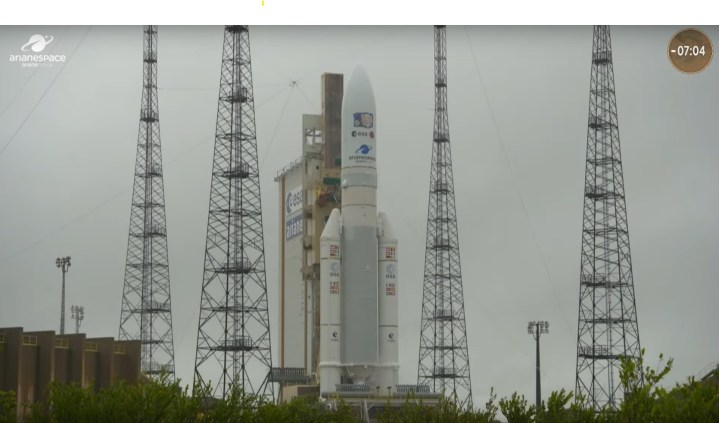The launch of the European Space Agency (ESA)’s JUICE mission to the icy moons of Jupiter has been delayed by 24 hours due to weather conditions. Risk of lightning near the launch pad at Europe’s Spaceport in Kourou, French Guiana meant that the launch was scrubbed around 10 minutes prior to the scheduled liftoff today, Thursday, April 13.
The JUICE mission, which will visit three of Jupiter’s largest moons — Europa, Ganymede, and Callisto — aims to learn about whether these moons could be potentially habitable as they are thought to host liquid water oceans beneath thick icy crusts. The spacecraft is to be launched using an Ariane 5 rocket and will spend approximately eight years traveling to the Jupiter system before arriving at Jupiter in July 2031.

The launch of the mission will now be pushed back until tomorrow, with hopes for better weather then. “It’s part of our business,” said Stéphane Israël, CEO of ArianeSpace, during a livestream of the launch, confirming that the delay was due to the risk of lightning. “What is important is that the launcher and JUICE are in stable configuration and in full security. We will be back tomorrow morning.”
The launch is now scheduled for 8:14 a.m. EST (5:14 a.m. PT) tomorrow, Friday, April 14. The launch time has been brought forward by one minute to allow for JUICE’s extremely tight launch window.
The JUICE launch window is just one second long, because of the need to conserve fuel on the journey to Jupiter. The spacecraft needs to hit a particular trajectory for this journey, which will involve gravity-assist flybys of several planets including Earth and Venus to give the craft a boost along its way. To join this trajectory as efficiently as possible, the launch needs to occur within a very specific window each day with one-second windows available until the end of April.
To watch the second launch attempt tomorrow, you can head over to ESA’s Web TV channel on YouTube, where the launch will be livestreamed with coverage beginning around 7:45 a.m. ET (4:45 a.m. PT).



